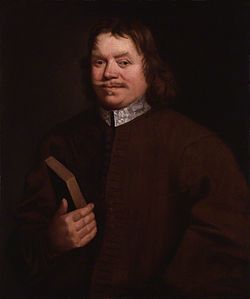Analysis of Upon The Lark and The Fowler
Thou simple bird, what makes thou here to play?
Look, there's the fowler, pr'ythee come away.
Do'st not behold the net? Look there, 'tis spread,
Venture a little further, thou art dead.
Is there not room enough in all the field
For thee to play in, but thou needs must yield
To the deceitful glitt'ring of a glass,
Plac'd betwixt nets, to bring thy death to pass?
Bird, if thou art so much for dazzling light,
Look, there's the sun above thee; dart upright;
Thy nature is to soar up to the sky,
Why wilt thou come down to the nets and die?
Take no heed to the fowler's tempting call;
This whistle, he enchanteth birds withal.
Or if thou see'st a live bird in his net,
Believe she's there, 'cause hence she cannot get.
Look how he tempteth thee with is decoy,
That he may rob thee of thy life, thy joy.
Come, pr'ythee bird, I pr'ythee come away,
Why should this net thee take, when 'scape thou may?
Hadst thou not wings, or were thy feathers pull'd,
Or wast thou blind, or fast asleep wer't lull'd,
The case would somewhat alter, but for thee,
Thy eyes are ope, and thou hast wings to flee.
Remember that thy song is in thy rise,
Not in thy fall; earth's not thy paradise.
Keep up aloft, then, let thy circuits be
Above, where birds from fowler's nets are free.
This fowler is an emblem of the devil,
His nets and whistle, figures of all evil.
His glass an emblem is of sinful pleasure,
And his decoy of who counts sin a treasure.
This simple lark's a shadow of a saint,
Under allurings, ready now to faint.
This admonisher a true teacher is,
Whose works to show the soul the snare and bliss,
And how it may this fowler's net escape,
And not commit upon itself this rape.
| Scheme | AABBCCDDEEFFXAGGHHAAXXIIXXII JJKKLLXXMM |
|---|---|
| Poetic Form | |
| Metre | 1101111111 110101101 11101011111 1001010111 1111010101 1111011111 100101101 1011111111 11111111001 1101011101 1101111101 1111110101 1111010101 1101111 11111011011 0111111101 111111101 1111111111 11111101 1111111111 1111101101 1111110111 0111110111 1111011111 0101111011 101111110 1101111101 0111110111 11011101010 11010101110 11110111010 01011111010 110101101 10110111 1101101 1111010101 0111110101 0101010111 |
| Closest metre | Iambic pentameter |
| Characters | 1,652 |
| Words | 319 |
| Sentences | 19 |
| Stanzas | 2 |
| Stanza Lengths | 28, 10 |
| Lines Amount | 38 |
| Letters per line (avg) | 33 |
| Words per line (avg) | 8 |
| Letters per stanza (avg) | 636 |
| Words per stanza (avg) | 158 |
Font size:
Submitted on May 13, 2011
Modified on March 05, 2023
- 1:41 min read
- 91 Views
Citation
Use the citation below to add this poem analysis to your bibliography:
Style:MLAChicagoAPA
"Upon The Lark and The Fowler" Poetry.com. STANDS4 LLC, 2024. Web. 30 May 2024. <https://www.poetry.com/poem-analysis/22174/upon-the-lark-and-the-fowler>.


Discuss this John Bunyan poem analysis with the community:
Report Comment
We're doing our best to make sure our content is useful, accurate and safe.
If by any chance you spot an inappropriate comment while navigating through our website please use this form to let us know, and we'll take care of it shortly.
Attachment
You need to be logged in to favorite.
Log In